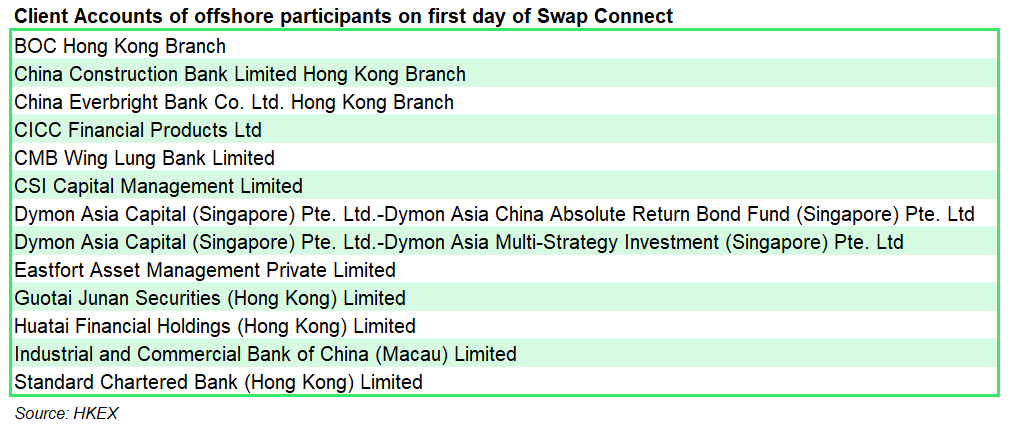Some 27 offshore investors traded onshore renminbi (RMB) interest rate swaps with a notional value exceeding CNY8.3 billion (US$1.2 billion) on the first day of Swap Connect.
The Swap Connect is a new mutual access initiative between Hong Kong SAR and China’s interbank interest rate swap markets, and is an extension of the Bond Connect launched in 2017.
Starting with a Northbound channel, offshore investors will now be able to trade and clear onshore RMB interest rate swaps without changing their existing trading and settlement practices.
The Swap Connect supports the further development of cross-border structured products where the underlying is referenced to an onshore asset - William Shek, HSBC
"The Swap Connect supports the further development of cross-border structured products where the underlying is referenced to an onshore asset and can now be hedged with the benefit of onshore swaps to manage the interest rate risk," William Shek (pictured), head of markets & securities services Hong Kong at HSBC, told SRP.
Along with 14 house accounts which executed first trades under the Swap Connect today (15 May), HSBC was the counterparty of several global clients including Asian investment managers - Dymon Asia and CSI Capital Management. HSBC China acted as the designated market maker while HSBC Hong Kong as the mandated clearing broker.
The Swap Connect is run by the China Foreign Exchange Trade System (CFETS), Shanghai Clearing House (SHCH) and Hong Kong Exchanges and Clearings (HKEX) through its clearing subsidiary OTC Clearing Hong Kong.
The programme 'complements the derivatives mechanism under the new qualified foreign institutional investor (QFII) rules', according to Mingxi Fan (right), deputy head of China global markets at UBS.
QFIIs and RMB QIFFs are inbound investment programmes which enable qualified foreign institutional investors to gain direct access to trade A-shares, bonds and securities investment denominated in onshore Chinese yuan (CNY). QFIIs remit foreign currencies while QFIIs use offshore Chinese yuan (CNH).
However, a source at a Chinese securities house, which participated as a market-maker under the programme today, told SRP that the Swap Connect is primarily aimed at hedging cash bonds and has a "very limited" impact on the onshore structured product market. The source is unaware of any structured product traded under the existing QFII programme unlike the qualified domestic institutional investor (QDII) scheme.
The qualified domestic limited partnership (QDLP) is another government-led initiative which is expected to enhance cross-border trading, including structured products.
By underlying asset, the Chinese structured product market is dominated by the CSI 500 and CSI 300 equity indices and foreign exchange (FX) rates, mostly the EUR/USD currency pair, according to SRP data. The seven-day inter-bank fixed repo rate (FR007) and one-year China loan prime rate (LPR) are also the preferred choices in terms of interest rates.
Citibank (China) is also one of the first batch of market makers trading under the Swap Connect scheme.
According to Yang Ji (right), executive vice president of Citi China and general manager of Citi China Global Markets, the ‘Northbound Swap Connect' is very significant in promoting the onshore financial derivatives market and opening up financial markets.
“Citi China has been deeply involved in the onshore financial market, and has provided offshore investors with high-quality market-making quotations and custody services under the Bond Connect, CIBM and QFII schemes,” he said.
The onshore interest rate swap market will appeal more to offshore investors to participate in, with the latest launch.
'As the most important and prevailing derivative product in the RMB interest rate market, the RMB interest rate swap is an important tool for onshore and offshore investors to manage RMB interest rate risks', said a Citi spokesperson.
The launch of Bond Connect in 2017, part of the broader Connect programme, was the first attempt in the opening of the Chinese bond market. Since then, international investors’ onshore bond holdings have grown steadily from CNY800 billion in June 2017 to CNY3.4 trillion in December 2022, according to HKEX.



